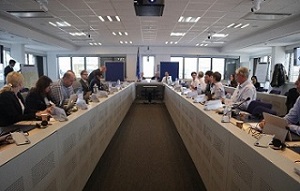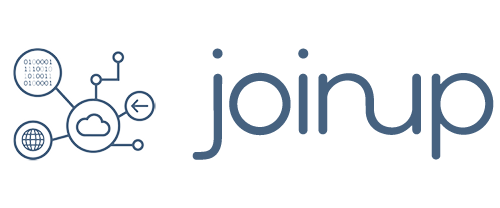
Working together for EIF implementation: conclusions of NIFO workshop as part of eGov week
On 28 September, ISA² held a workshop gathering National Interoperability Framework Observatory (NIFO) Contact Points to discuss the new monitoring mechanism of the European Interoperability Framework (EIF). The new monitoring mechanism aims at measuring the level of implementation of the EIF recommendations and principles and in this way to provide better insight to the EU Member States on areas where they can improve when it comes to interoperability.
For the purpose of the monitoring mechanism, a questionnaire targeting national contact points has been designed in order to collect direct responses needed to measure primary indicators. To measure the level of implementation of the EIF, the project team will also use secondary indicators, compiled of existing data sources, such as the Digital Economy and Society Index, CEF Digital Monitoring Dashboard, Open Data Portal and eGovernment Benchmark Report. The result of the EIF monitoring exercise will provide useful inputs for the ISA² Programme mid-term and final evaluations, also helping identify synergies across the units facilitating interoperability in the European Commission and brand NIFO as an interoperability observatory.
To carry out the monitoring mechanism of the EIF in the EU Member States, ISA² ran 3 pilots with Bulgaria, Luxembourg and Spain to test the questionnaire and to evaluate the proposed primary indicators. The feedback of Spain helped simplify the questionnaire and reduce the level of granularity of the questions. The test in Bulgaria led to the introduction of free text boxes in each question to give the opportunity for the respondents to share additional feedback or best practices at the national level. Thanks to Luxembourg, the number of questions has been considerably reduced and streamlined.
Currently, the questionnaire consists of 53 questions gathering data for 42 primary indicators. Each question has been tested to check the level of “face validity” to ensure clarity, also including direct references to the EIF in order to make it easier for respondents to answer the questionnaire.
/isa2/file/nifoworkshop2bjpg_ennifo_workshop_2b.jpg

During the workshop, the ISA² team presented the main supporting tools that will be to made available to the EU Member States for the EIF implementation: the concept of the EIF ambassadors, the EIF implementation toolbox and the EIF training materials.
Inspired by the concept of the OECD Digital Government Toolkit, the EIF Implementation Toolbox is envisaged as a structured collection of solutions and good practices which can support public administrations in the implementation of the EIF principles and recommendations.
During this intensive day, Miguel Alvarez, the project officer for NIFO, also explained the training modules foreseen for the implementation of the EIF. They will focus on the following elements:
- Initial introduction to the European Interoperability Framework.
- Detailed presentation of the EIF, it principles and main recommendations.
- Presentation of the main benefits of the EIF Monitoring Mechanism and an overview of its main features, such as inputs and indicators used.
- Presentation of the EIF Ambassadors’ role and main activities.
- Presentation of the EIF Implementation Toolbox with provision of concrete examples of how it could work.
Finally, the participants expressed their feedback on the training modules, the EIF implementation toolbox and the concept of EIF ambassadors through a series of dynamic brainstorming sessions.
With all the feedback collected, NIFO will now be able to develop and implement supporting materials, such as EIF guidelines and training modules to better support the NIFO contact points in their countries for achievement of higher implementation of the EIF and National Interoperability Frameworks.



